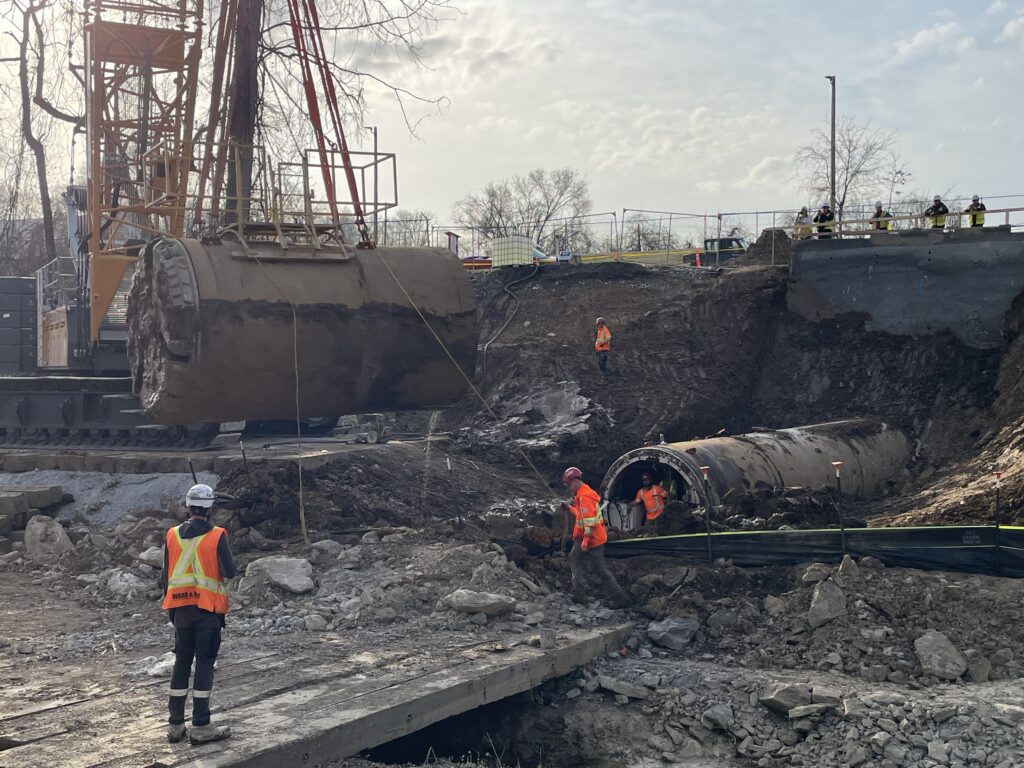The new pretreatment and filter facility planned for the Omohundro Water Treatment Plant (OMO) was designed to be built in an area that overlapped with an existing stream on the plant’s property. To preserve the planned location of the facility while being mindful of the surrounding environment, the stream needed to be carefully redirected.
Several options were explored for how best to relocate the stream with minimal disruption. The selected approach involved placing the stream in a tunnel and shifting it farther west on the OMO campus. This solution not only supported the facility’s development but also helped avoid future conflicts with potential plant expansions.
Relocating a stream is a delicate process that requires thoughtful planning to protect natural systems. Environmental assessments and hydraulic studies were conducted to understand the stream’s flow and maintain its function and ecological balance. These evaluations guided the design of the new path and helped determine the appropriate size and placement of the pipe.
Based on these studies, the stream was redirected through an 84-inch pipe inside a 108-inch tunnel bore. In Fall 2024, the construction team began tunneling approximately 1,200 linear feet up to 60 feet below the surface using a Microtunneling Boring Machine (MTBM), a method chosen for its precision and minimal surface disturbance. The tunnel and pipe were completed in March 2025. An additional 66 feet of pipe was then installed at the upstream end using open-cut excavation to connect the stream to the conveyance pipe inside the tunnel.
To complete the project, concrete headwalls will be built at both ends of the pipe to stabilize the structure and guide the water flow. A detention basin will also be added at the tunnel’s outlet to gently slow the water and help it transition into Brown’s Creek, which eventually flows into the Cumberland River. These features are designed to support the stream’s natural behavior and reduce erosion.
Completion of the stream relocation is a major milestone for the Process Advancements Project by making room for the new treatment facilities, while also maintaining the health and resilience of the surrounding environment.


